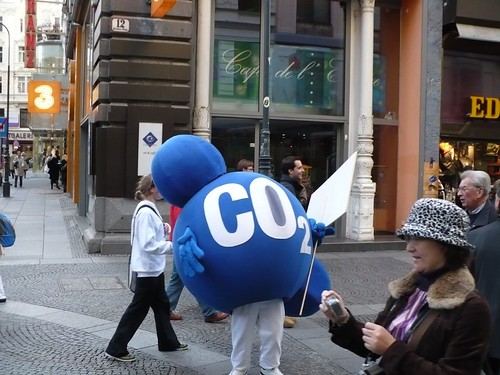Monday, December 29, 2008
Monday Linkage
~~~
Arnold wants to waive CEQA to pass the budget. I like that for transit, not so much for roads.
~~~
Tom Friedman writes gas tax and Oberstar talks about it on NPR.
~~~
A Portland Architect talks about how GM should be the catalyst for a nationwide streetcar revival.
~~~
Four subway lines opened this year. Just not in this country.
Sunday, December 28, 2008
Inertia
90,000 Riders on First Day
Saturday, December 27, 2008
Prop 13 Hangover
H/T YglesiasThis leads to all sorts of idiotic consequences. Back when I lived in California, one of the few ways of raising taxes available to cities and towns was to increase the sales tax by some fraction of a percent. Result? Cities and towns did this, and then tried desperately to induce people to set up car dealerships and other places where people sell big, expensive things. Did it make sense to have so many car dealerships? Who cares! It's revenue!
Likewise, people in California don't always sell their houses when it would normally make sense to do so, because as long as they stay in their existing house, the assessment will not rise much and their taxes will stay low, whereas if they buy a new house, it will be assessed at its purchase price, and their taxes will go up.
"Free markets", indeed.
Opening a Line Always Popular
Post Christmas Day Linkage
~~~
The Tram that serves OHSU in Portland did an amazing job keeping people working there linked to the city during the snow storm.
The tram, which extends from a streetcar stop in South Waterfront up to OHSU, helped the hospital keep running through the worst of the snow. With buses unable to make the trip up to Marquam Hill, OHSU kept the tram running until midnight so that patients and staff could get up to the hospital and back down the hill again.~~~
Light Rail is now open in Phoenix!
~~~
California HSR could get $20B from the stimulus. That would be a great contribution to the future of California, just like the aqueduct was many years previous. Personally, I'd like to see us hire Dutch engineers for New Orleans and California's Levee problems. I know its off topic, but its something that needs serious attention too and will benefit for many years to come.
~~~
More on the big push from Congressman Oberstar.
Oberstar said, "We're going to rewrite the whole book on this thing." The stimulus package is the prologue to a broader effort to show that mass transit is not just a good idea; it's a vehicle America can ride into the future.This makes me think there needs to be a name for our movement. Something simple. The Big Push? Any suggestions?
~~~
This seems a bit much to me. $668 million for a crossover track between Walnut Creek and Concord on BART?? Isn't there a better use for that money? Anyone know anything about this?
~~~
And finally, Dan shows us how to man up in the snow.
Thursday, December 25, 2008
Good for Chu
"Somehow we have to figure out how to boost the price of gasoline to the levels in Europe," Steven Chu, the director of the Lawrence Berkeley National Laboratory, told the Wall Street Journal in September.From the Wall Street Journal Article:
In a sign of one major internal difference, Mr. Chu has called for gradually ramping up gasoline taxes over 15 years to coax consumers into buying more-efficient cars and living in neighborhoods closer to work.At least someone in the administration gets it. Apparently Obama does not, at least publicly.
But Mr. Obama has dismissed the idea of boosting the federal gasoline tax, a move energy experts say could be the single most effective step to promote alternative energies and temper demand. Mr. Obama said Sunday that a heightened gas tax would be a "mistake" because it would put "additional burdens on American families right now."
Replay 10.16.07: Vienna's Ringstrasse

What is the history of this tram ring that allows the circulation of this signature street? Initially the ring was the city fortifications. However Franz Joseph, the King of the Austrio-Hungarian Empire decided that it wasn’t needed anymore and wanted to create a signature street. And create a meaningful place he did. The street is very wide and accommodates automobiles, streetcars, as well as a wide tree lined pedestrian and bike space.
The most interesting piece related to transit is not really the loop itself, although its an important part of both Vienna and Budapest transport, but rather the multimodal connections that are made at certain nodes along the Ringstrasse. At one node, there are four tram stops on the surface, a tram turnaround just beneath the surface and a connection to the M2 Metro which follows its own ring around half of the downtown. In the photos below you can kind of see how this works.


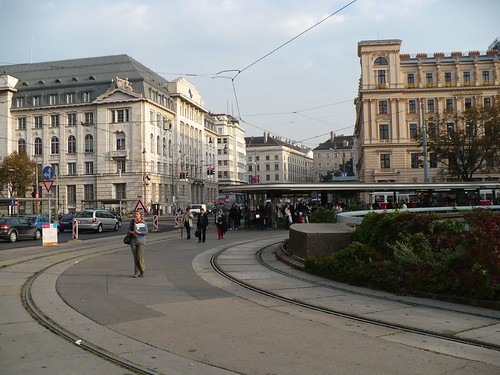
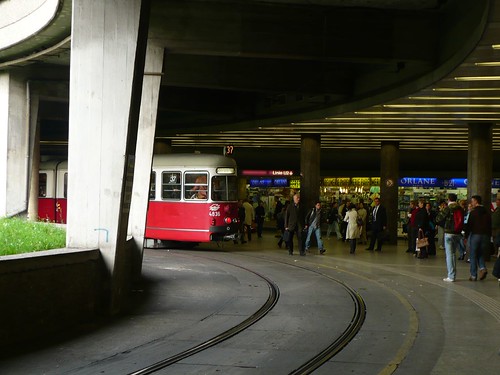
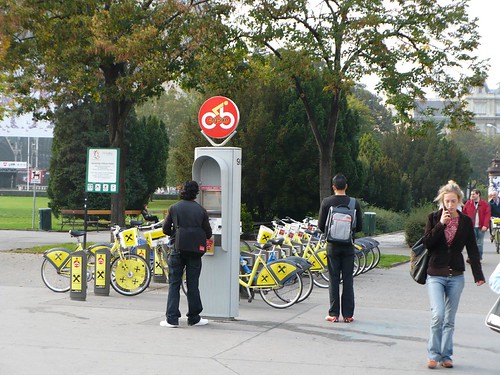
In another node, there are loops for trams, buses and the Metro connected by tunnels which allow citizens to not cross the Ringstrasse on the surface. Underneath the surface its like a mini-mall with eateries and the infamous Tabak shops where you can buy cigarettes and your metro pass.
So why do these systems work? Well first off they are the circulators for all modal connections with in the central city. Their operation is dependent on the interface of faster Metro lines and slower tram and bus connections (the photo below is a tram and bus stop). In Vienna specifically the buses sometimes are even using the tram right of way and stops of the trams. They also all connect to the intercity trains on the edges of town allowing anyone living in town to get around effortlessly without a car.
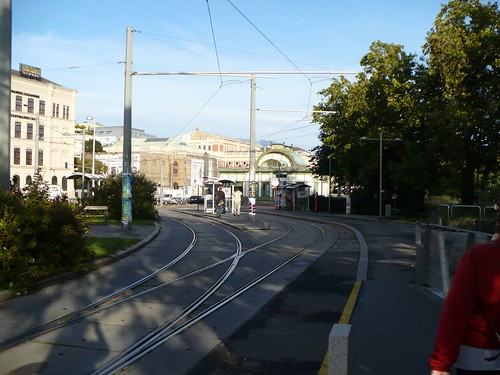
This means that its incredible affordable to live in the old parts of Vienna. I was told that inside the ring is expensive, but just outside of the ring you can get a nice flat for $600 per month. I will warn folks that there are lots of good restaurants there so food could get expensive.
And if you're worried about the environment, there are people there to remind you.
